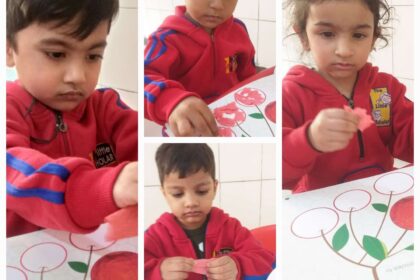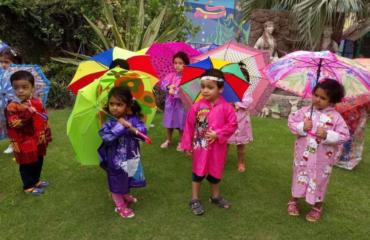
You’ve heard of the nature versus nurture debates over what influences a child’s development. The first two layers of children are essentially the natural elements. They are inborn genetic traits that influence a child’s temperament and brain development.
Environmental factors comprise the nurture elements influencing the child. These are the aspects of a child’s life that are not related to the child’s genetic development but are influenced by his surroundings. These factors can be divided into three categories:
- Environmental factors
- Biologic factors
- Interpersonal relationships
These factors are further classified as “health determinants.” These are the conditions and supports that will help the child grow and develop in a healthy way.
Alternatively, they will cause long-term stress, resulting in slowed or stalled development of social, emotional, language, cognition (learning), and physical skills.
These are the areas you should consider when looking for ways to support your child. You must then consider how to improve them if they are inadequate or absent. This may necessitate making changes in yourself or seeking community support to care for you and your child.
This is an important step to take because parents have never been expected to be the sole providers for their children throughout history. Ancient communities fed, housed, and clothed one another. They helped care for and educate their community’s children.
With that concept of community support in mind, here are some areas to look into to see if you can make positive changes:
-
Environmental Factors
Environmental factors influencing early childhood development play a crucial role in shaping a child’s overall well-being. These factors encompass various aspects of a child’s surroundings, including:
Housing is important to all of us. That includes not only a roof over your head, but also play areas for your child, including green spaces. Is your home safe from violence and toxic substances like lead? It is a significant environmental factor influencing a child’s safety and sense of security.
The family income is a second environmental factor that influences child development and safety. Without a living wage or employment, access to safe housing is limited. Concerns have also been raised about food insecurity and poor nutrition, as well as the inability to provide adequate clothing and access to healthcare.
The parent(s)’ ability to provide the necessary care for their children is heavily influenced by their employment. However, employment necessitates the need for childcare, which can be costly if wages are inadequate.
Adequate employment opportunities may be a problem if the job is located far away and there is limited public transportation. Many single mothers face income inequity when compared to their male counterparts. Finally, in some communities or regions, the unemployment rate may be higher, making it difficult for parent(s) to meet their family’s financial needs.
The fourth environmental factor focuses on educational opportunities. Looking at children, it would include qualified preschools as well as the quality of the k-12 system to which they will be exposed.
The education opportunities and level of education of the parent(s) also influence how well their children perform. If parents do not have a high school diploma, they are unlikely to be able to find a well-paying job with job security.
The need and importance of pre-primary education cannot be overstated. Preschool programs provide a nurturing environment where children can:
- Develop social skills through interaction with peers and teachers.
- Learn essential cognitive skills like literacy and numeracy through play-based activities.
- Build emotional regulation skills by learning to manage their emotions in a safe and supportive environment.
- Develop a love of learning that sets the foundation for future academic success.
The benefits of preschool education are well-documented and include:
- Improved academic performance: Children who attend preschool programs tend to perform better in school and are more likely to graduate high school.
- Enhanced social skills: Preschool fosters social interactions with peers, leading to better communication, collaboration, and problem-solving skills.
- Increased self-confidence: Preschool provides opportunities for children to explore their interests and strengths, boosting their confidence and self-esteem.
- Reduced behavioral problems: Preschool helps children learn to regulate their emotions and develop positive coping mechanisms, leading to fewer behavioral issues.
-
Biologic Factors
A child’s gender has a significant impact on the kind of life he or she will lead. Women are not treated equally around the world in terms of property ownership, equal pay for equal work, or access to the education required to reach men’s professional levels.
According to the World Economic Forum 2020, the United States ranks 53 out of 153 countries in terms of equality success. Women are more likely to face abuse and discrimination, particularly if they are members of a minority or the LGBT community.
Another concern for children’s long-term productivity as they grow older is their health. Their health care is important, as is their parents’ health. Prenatal care for the mother is critical to the delivery of a healthy baby.
Any chronic health problems in the child or parents can cause stress in the family. Communities must have adequate health resources so that children can have their health issues addressed, immunizations administered, and dental care provided.
If children do not grow up in a safe, secure, and supportive environment, they are more likely to develop mental health disorders. If the parent(s) suffer from a mental health disorder, the child is at risk of abuse, neglect, or fear due to attachment issues.
-
Interpersonal Relationships
Family health practices such as nutrition, sleep schedules, activity, and oral health are all important for skill development. Without these practices, the child’s brain and body may be unable to cope with the demands of development and learning.
Children must develop secure attachments to their primary caregivers, whether they are parents or other adults, in order to grow and thrive.
Attachment is a strong emotional bond that develops between a baby and his or her primary caregiver. If this bond is not secure for any of several reasons, the child will become distressed. This can cause problems with growth, including failure to thrive. There could be serious behavioral issues. The child’s brain development may also slow or stop altogether.
There are four kinds of attachments:
- Secure
- Anxious and preoccupied
- Dismissive and avoidant.
- Fearful – avoidant (also called disorganized)
These four types are influenced by both the child’s and adult’s temperaments, developmental issues, and environmental factors such as domestic abuse or parental mental or physical health problems that make the parent less emotionally available to the child.
Parenting styles (including discipline styles) influence how a child grows and learns, as well as how he matures into an adult. Children who are raised with parenting styles that are more focused on rules and expectations than on support and nurturing are more likely to develop mental health issues, including personality disorders.
There are various types of parenting:
- Authoritarian or disciplinarian
- Permissive or indulgent
- Uninvolved
- Authoritative
The final aspect of interpersonal relationships that affects children is their social networks. These are opportunities to interact with people other than the immediate parent-child dyad.
The more people a child can learn from, the more likely he or she will be willing to learn and participate in the community. If the child does not have many opportunities to interact with others, he may experience gaps in his social and emotional development. This can lead to fear of others who are different from him, as well as bias, discrimination, or bigotry.
Understanding the effects of different environmental situations and factors on how a child grows and develops allows parents and adults working with children to determine whether they require different approaches than those they were taught or raised with.





